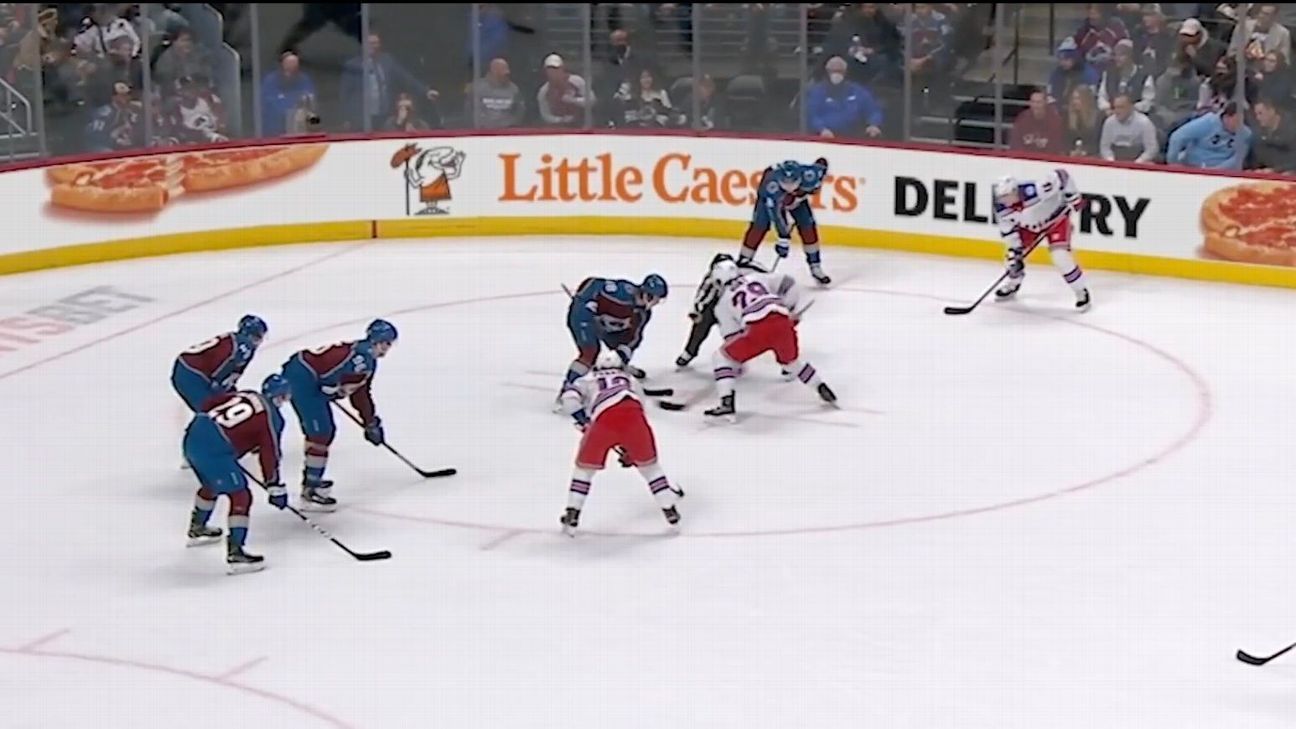The NHL is debuting digitally enhanced dasherboards (DED) for all games this season that will “erase and replace” the advertising found on arena rink boards with virtual ads on broadcasts.
The DED system allows for the digital replacement of camera-visible arena dasherboards within local, national and international NHL game broadcasts. While overlaying other advertisements on the boards will be its primary function, the DED system eventually will allow broadcasts to use the boards for everything from in-game stats to special effects for goal celebrations.
“Every game, every night. This is the new norm,” said Keith Wachtel, the NHL’s chief business officer and executive vice president of global partnerships. “We don’t like to call it ‘erase and replace,’ but that was the original terminology. It’s taking something that’s existing, keeping that value, but replacing it with something that’s much better and isn’t static.”
The first time the NHL put advertisements on its boards was in 1981 with the Minnesota North Stars. A typical arena rink will have national sponsors and local advertisers. With this technology, those advertisers can be seen on the boards for a team’s home and away game broadcasts.
“What this does is allow clubs to sell as many regional game broadcasts as they’re able to in their market,” Wachtel said. “Also, competitors come into everyone else’s market. So, every time the Rangers play in Philadelphia, Chase [Bank] has to see Wells Fargo ads coming back into their very important New York market. You can now avoid that issue, if it’s important to own your own market.”
When the game is seen through the main center ice camera, fans will see the DED system digital dasher ads. When there are close-ups and reverse angles on broadcasts, the in-arena boards will be visible, so those in-arena advertisers will get some exposure.
“By and large, the national and local marketers have been extremely receptive,” Wachtel said.
The project, at a cost of tens of millions of dollars, is seven years in the making. That’s how long it took for the NHL to feel that the technology was in the right place and was scalable for the number of games teams play in a season.
The digital boards allow broadcasts to constantly change which advertisers appear. There are five different “zones” sold to sponsors: behind both nets and all three zones. Ads are sold like commercials, with brands buying 30-second increments, based on the game clock. Every game, teams have 120 increments to program. Each broadcaster and the NHL itself get 90 seconds of institutional time for their own advertisements.
Sometimes, the boards will resemble the ones traditionally seen in the arena. Other times, one advertiser will take over the boards in a particular zone or even the entire rink.
The ads allow advertisers to change what ads they want to feature during a game. For example, an automaker could have a logo on the static boards; on the digital boards, it could push a different model of car in every period.
The NHL has partnered with virtual ad company Supponor to develop a remote, artificial intelligence-based keying technology to program dasherboards automatically. The digital boards are programmed from a central hub.
The DED system will be featured on the NHL Global Series games that start the regular season on Oct. 7 in Prague.
“There will be a local Nashville Predators feed, a San Jose Sharks feed, a rest-of-the-world feed and then a clean feed because the local broadcasting partner wants to see their local partner boards,” said Allison Eddy, a general manager on the DED project for the NHL.
The NHL has games on the air in more than 100 countries. It won’t have feeds in every country to start the season, but the expectation is to create them for certain international markets depending on inventory demands. In the future, every broadcast of every game could see completely different ads on the boards around the world.
“The way the technology works is that we create a feed by country, and we can use those boards to sell to local marketers or pan-European marketers,” Wachtel said.
Also big: allowing European sportsbooks the chance to get their ads on the boards for those feeds.
Digitally enhanced dasherboards allow sportsbooks to advertise “locally,” appearing on the boards for road games to the audience watching back in the home market. That’s important, considering not every NHL market has legalized wagering and not every sportsbook has clearance to operate in markets that do.
The NHL expects there to be an adjustment period for fans, but that it’ll ultimately improve their viewing experience. The league worked with two analytics companies, and Wachtel said research indicated that fans will be more comfortable watching a game with one brand wrapping around the boards than “26 different things that your eye can catch.” He said that was confirmed by the research firm MediaScience, which does neurometric eye-scanning.
“Like anything else, you’re going to have your people that don’t like it, that think it is difficult to watch. But over time, like everything else, people will get used to it, and we’re not concerned at all whatsoever,” Wachtel said.
Wachtel said he expects that digitally enhanced boards will become mainstream in sports.
“This is easily the most complicated, difficult but rewarding project I’ve ever worked on. It’s the only platform of its kind in sports, based on how it’s being deployed with the scale of every game, every night,” he said. “When you’re in the arena, you won’t see any change. When you’re watching at home, you won’t know the difference.”
